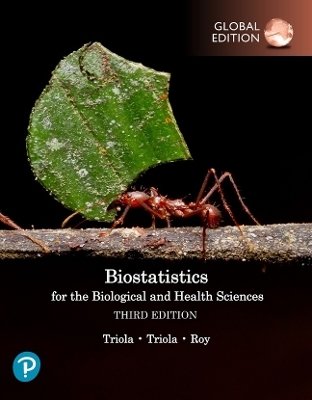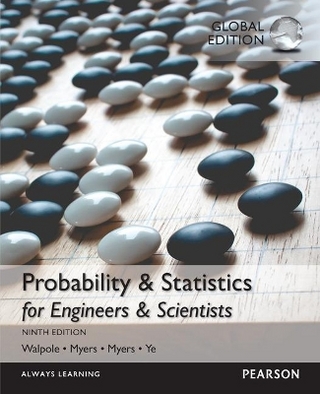
Seeing Through Statistics
Brooks/Cole
978-0-534-39402-8 (ISBN)
- Titel ist leider vergriffen;
keine Neuauflage - Artikel merken
This third edition of Jessica Utts' popular book develops statistical literacy and critical thinking through real-world applications, with an emphasis on ideas, not calculations. This text focuses on the key concepts that educated citizens need to know about statistics. These ideas are introduced in interesting applied and real contexts, without using an abundance of technicalities and calculations that only serve to confuse students.
PART 1: FINDING DATA IN LIFE. 1. The Benefits and Risks of Using Statistics. Statistics. Detecting Patterns and Relationships. Don't Be Deceived by Improper Use of Statistics. Summary and Conclusions. 2. Reading the News. The Educated Consumer of Data. Origins of News Stories. How to be a Statistics Sleuth: Seven Critical Components. Four Hypothetical Examples of Bad Reports. Planning Your Own Study: Defining the Components in Advance. 3. Measurements, Mistakes, and Misunderstandings. Simple Measures Don't Exist. It's All in the Wording. Open or Closed Questions: Should Choices Be Given? Defining What is Being Measured. Defining a Common Language. 4. How to Get a Good Sample. Common Research Strategies. Defining a Common Language. The Beauty of Sampling. Simple Random Sampling. Other Sampling Methods. Difficulties and Disasters in Sampling. 5. Experiments and Observational Studies. Defining a Common Language. Designing a Good Experiment. Difficulties and Disasters in Experiments. Designing a Good Observational Experiment. Difficulties and Disasters in Observational Studies. Random Sample versus Random Assignment. 6. Getting the Big Picture. Final Questions. Case Studies. PART 2: FINDING LIFE IN DATA. 7. Summarizing and Displaying Measurement Data. Turning Data into Information. Picturing Data: Stemplots and Histograms. Five Useful Numbers: A Summary. Boxplots. Traditional Measures: Mean, Variance, and Standard Deviation. Caution: Being Average Isn't Normal. 8. Bell-Shaped Curves and Other Shapes. Populations, Frequency Curves, and Proportions. The Pervasiveness of Normal Curves. Percentiles and Standardized Scores. z-Scores and Familiar Intervals. 9. Plots, Graphs, and Pictures. Well-Designed Statistical Pictures. Pictures of Categorical Data. Pictures of Measurement Variables. Difficulties and Disasters in Plots, Graphs, and Pictures. A Checklist for Statistical Procedures. 10. Relationships Between Measurement Variables. Statistical Relationships. Strength versus Statistical Significance. Measuring Strength Through Correlation. Specifying Linear Relationships through Regression. 11. Relationships Can Be Deceiving. Illegitimate Correlations. Legitimate Correlation Does Not Imply Causation. Some Reasons for Relationships Between Variables. Confirming Causation. 12. Relationships Between Categorical Variables. Displaying Relationships Between Categorical Variables. Relative Risk, Increased Risk, and Odds. Misleading Statistics about Risk. Simpson's Paradox: The Missing Third Variable. 13. Statistical Significance for 2 x 2 Tables. Measuring the Strength of a Relationship. Steps for Assessing Statistical Significance. The Chi-Square Test. Practical versus Statistical Significance. 14. Reading the Economic News. Cost of Living: The Consumer Price Index. Uses of the Consumer Price Index. Criticisms of the Consumer Price Index. Economic Indicators. 15. Understanding and Reporting Trends over Time. Time Series. Components of Time Series. Seasonal Adjustments: Reporting the Consumer Price Index. Cautions and Checklist. PART 3: UNDERSTANDING UNCERTAINTY IN LIFE. 16. Understanding Probability and Long-Term Expectations. Probability. The Relative-Frequency Interpretation. The Personal-Probability Interpretation. Applying Some Simple Probability Rules. When Will It Happen? Long-Term Gains, Losses, and Expectations. 17. Psychological Influences on Personal Probability. Revisiting Personal Probability. Equivalent Probabilities: Different Decisions. How Personal Probabilities can Be Distorted. Optimism, Reluctance to Change, and Overconfidence. Calibrating Personal Probabilities of Experts. Tips for Improving Your Personal Probabilities and Judgments. 18. When Intuition Differs from Relative Frequency. Revisiting Relative Frequency. Coincidences. The Gambler's Fallacy. Confusion of the Inverse. Using Expected Values to Make Wise Decisions. PART 4: MAKING JUDGMENTS FROM SURVEYS AND EXPERIMENTS. 19. The Diversity of Samples from the Same Population. Setting the Stage. What to Expect of Sample Proportions. What to Expect of Sample Means. What to Expect in Other Situations. 20. Estimating Proportions with Confidence. Confidence Intervals. Three Examples of Confidence Intervals from the Media. Constructing a Confidence Interval for a Proportion. 21. The Role of Confidence Intervals in Research. Confidence Intervals for Population Means. Confidence Intervals for the Difference Between Two Means. Revisiting Case Studies: How Journals Present Confidence Intervals. Understanding Any Confidence Interval. 22. Rejecting Chance?Testing Hypotheses in Research. Using Data to Make Decisions. The Basic Steps for Testing Hypotheses. Testing Hypotheses for Proportions. What Can Go Wrong: The Two Types of Errors. 23. Hypothesis Testing?Examples and Case Studies. How Hypothesis Tests are Reported in the News. Testing Hypotheses about Proportions and Means. Revisiting Case Studies: How Journals Present Hypothesis Tests. 24. Significance, Importance, and Undetected Differences. Real Importance versus Statistical Significance. The Role of Sample Size in Statistical Significance. No Difference versus No Statistically Significant Difference. A Summary of Warnings. 25. Meta-Analysis: Resolving Inconsistencies across Studies. The Need for Meta-Analysis. Two Important Decisions for the Analyst. Some Benefits of Meta-Analysis. Criticisms of Meta-Analysis. 26. Ethics in Statistical Studies. Ethical Treatment of Human and Animal Participants. Assurance of Data Quality. Appropriate Statistical Analyses. Fair Reporting of Results. 27. Putting What You Have Learned to the Test. Case Studies. Solutions to Selected Exercises. Index.
| Erscheint lt. Verlag | 23.6.2004 |
|---|---|
| Verlagsort | CA |
| Sprache | englisch |
| Maße | 188 x 231 mm |
| Gewicht | 908 g |
| Themenwelt | Mathematik / Informatik ► Mathematik ► Statistik |
| ISBN-10 | 0-534-39402-7 / 0534394027 |
| ISBN-13 | 978-0-534-39402-8 / 9780534394028 |
| Zustand | Neuware |
| Haben Sie eine Frage zum Produkt? |
aus dem Bereich

